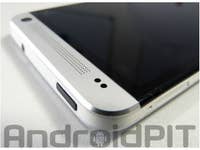Custom ROMS are great: with very little effort, you're able to switch out the preinstalled software on your smartphone for a new one that offers you more options and quite often a more attractive look. A nice custom ROM that fits this build is MIUI, of which I tried out version 5 on my Galaxy Nexus.
When it comes down to the hardware found in high-end smartphones, they really don't differ at a lot in how they're built. Like we keep saying again and again, the design and the software is what really makes a difference. Almost all manufacturers are using the Android system with their own interface. So where exactly is the difference and how does each manufacturer-branded ROM set itself apart? Today I compared Sony's Xperia user interface with stock Android. My test devices were the Sony Xperia Z and the Nexus 4 from Google and LG.
Ultimate Android UI comparison: 6 major systems compared
HTC is getting back to basics: after starting a long One series over the past few years with One X, One S and One V, the manufacturer has presented its master smartphone at the start of 2013. With its minimalistic design and technological superiority, the flagship makes all if its predecessors look old-fashioned and teaches its competitors the meaning of fear. The HTC One ups the ante for the Android Champion league and its pros heavily outweigh its cons. When putting the challenger to the test, is this device as good in practice as we expect it to be? The naked truth will be revealed to you in today's hands-on test.
After my first review and video of Xperia Z, I'd like to now follow up with a more detailed test review of the Sony's newly presented model. Whether or not this device is the crème de la crème, you can find it out with us.
Vor Kurzem getestet
Die beliebtesten Handys
Kein Eintrag vorhanden.




